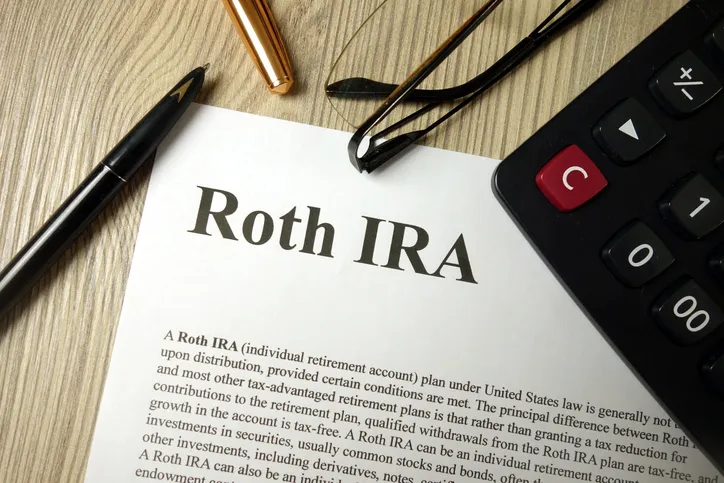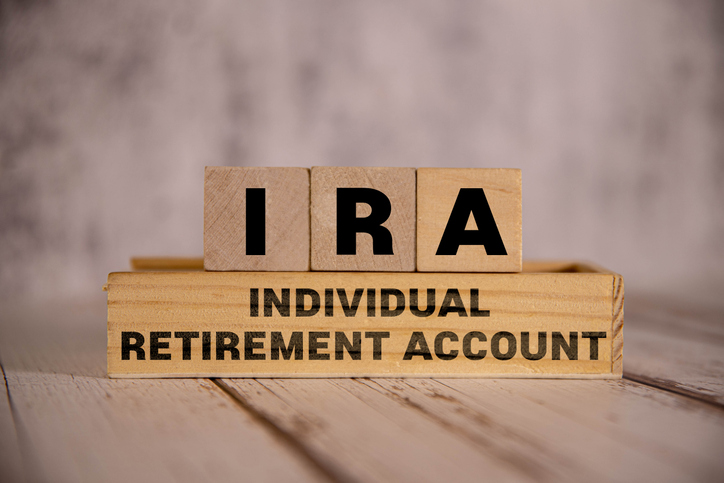Posts by SmartAsset Team

Can You Open a Roth IRA for Your Adult Child?
A Roth IRA offers tax-free growth and tax-free withdrawals in retirement, which can benefit young adults with long time horizons. You can help open a Roth IRA for an adult child if they have earned income and the account is in their name. Starting early allows more time for growth. A financial advisor can help… read more…

Inheritance Tax Planning: Rules and Exemptions
An inheritance can add to your finances, but taxes may reduce the amount that reaches you. Some states tax beneficiaries directly, while separate estate taxes may apply before assets are distributed. Inheritance tax planning accounts for these rules in advance by using exemptions and transfer strategies to limit what is lost to taxes. A financial… read more…

Using a High-Yield Savings Account for an Emergency Fund
A high-yield savings account for emergency fund purposes combines safety, liquidity and higher returns than a traditional savings account. These accounts let your emergency cash grow without locking it away or exposing it to market volatility. Whether you’re starting from scratch or fine-tuning your reserves, knowing how to use a high-yield savings account can strengthen… read more…

Is There an Income Cap for a Roth IRA?
Roth IRAs allow your savings to grow tax free and allow tax free withdrawals in retirement. Your income determines whether you can contribute and how much you can add. The IRS sets annual income limits based on your tax filing status. These limits decide whether you can make a full contribution, a reduced contribution, or… read more…

Wealth Management vs. Financial Planning: Services and Costs
Managing your money involves setting goals, organizing your finances and deciding how to use your resources over time. Wealth management and financial planning both support these decisions, but they serve different roles and are often used at different stages of wealth. They also differ in scope, cost structure and the level of ongoing involvement they… read more…

Buying a Home in a Trust: Revocable vs. Irrevocable
When you buy a home, the way the title is held affects how the property is managed, transferred and inherited. Some homeowners place a home in a trust to add privacy or simplify what happens after death. Choosing between a revocable and irrevocable trust depends on how much control you want to keep and how… read more…

How to Calculate the Risk/Reward Ratio for Investments
Every investment involves a possible gain and a possible loss. The risk/reward ratio compares how much you could lose to how much you could gain. Calculating this ratio may help you decide whether a potential return is worth the risk. A financial advisor can help you apply the risk/reward ratio to your portfolio by evaluating… read more…

Efficient Estate Planning After the Passing of a Parent
When a parent passes away, you may need to take on financial and legal responsibilities quickly. This can include securing bank accounts, managing bills and taxes and handling property or estate matters. Many of these tasks are time-sensitive and mistakes can create delays or added costs. A financial advisor can help review inherited assets, address… read more…

Pros and Cons of Claiming a College Student as a Dependent
Claiming a college student as a dependent can affect which education credits and tax benefits are available to the family and to the student. The outcome depends on factors such as income levels, financial support provided and eligibility for specific education-related tax credits. A financial advisor can help evaluate how different filing approaches affect tax… read more…

How to Use an HSA to Pay for COBRA
You can use money from a health savings account (HSA) to pay for COBRA health insurance, allowing you to cover premiums with tax-free withdrawals. COBRA premiums qualify as medical expenses under HSA rules, which can make an HSA useful for maintaining coverage after leaving a job. Before using these funds, it’s important to understand the… read more…

Can You Use HSA for Health Insurance Premiums After Retirement?
A health savings account (HSA) can support your retirement plan through tax-deductible contributions, tax-free growth and tax-free withdrawals for qualified medical expenses. But not all insurance premiums qualify, so it’s important to know which costs you can and cannot cover with HSA funds. A financial advisor can help you review your expected healthcare needs, compare… read more…

Medicare vs. Obamacare: Costs, Benefits and Enrollment
When comparing Medicare and Affordable Care Act (ACA or Obamacare) coverage, it helps to look at how each program works, who qualifies and what the costs may be. Medicare is a federal program for people age 65 and older and certain individuals with disabilities. The ACA provides access to private health-insurance plans and income-based subsidies… read more…

Inherited Non-Qualified Stretch Annuities: Rules and Taxes
An inherited non-qualified stretch annuity pays out over many years instead of all at once. Only the earnings in each payment are taxable because the original contributions were made with after-tax dollars. Spreading payments over time can lower the yearly tax bill and keep the remaining balance growing tax-deferred. Distribution rules vary based on the… read more…

What Is a Stretch Annuity and How Does It Work?
A stretch annuity lets a beneficiary receive inherited annuity payments over an extended period rather than all at once. Spreading payments over time can create a steadier income stream and may limit how much taxable income is recognized each year. The remaining balance continues to grow tax-deferred while payments are made, which can support longer-term… read more…

What Is a Non-Qualified Stretch Annuity?
A non-qualified stretch annuity extends the payout of an inherited annuity over time, rather than receiving the full amount in a single lump sum. While qualified annuities (such as those within IRAs or 401(k)s) are subject to strict rules under the SECURE Act, non-qualified annuities, which are funded with after-tax dollars, may offer more flexible… read more…

How to Build a Roth IRA Portfolio for Long-Term Growth
A Roth IRA is a tax-advantaged retirement account many people use to build long-term savings, but its rules and benefits can be confusing. Because qualified withdrawals are tax-free, the investments you select inside the account may influence your future retirement income. Whether you are opening your first Roth IRA or updating an existing one, knowing… read more…

Why Bond Prices and Interest Rates Move in Opposite Directions
If you’ve ever watched bond prices fall while interest rates rise, you’ve seen one of the core mechanics of the bond market. These two factors move in opposite directions because of how bonds are priced relative to current market rates. While bonds are often viewed as a steadier part of an investment portfolio, their value… read more…

Can You Lower Your Mortgage Payment By Paying Down Principal?
Homeowners often see a mortgage as one of their largest financial commitments, and paying it off faster can feel like a major financial win. Extra payments toward the principal reduce the balance more quickly, but they generally shorten the loan term rather than lower the required monthly payment, unless you refinance or the lender recalculates… read more…

Financial Advisor for Retirement: Services and Examples
Retirement is a new stage of life that may include travel, part-time work, new interests or a slower pace. Preparing for it often involves more than saving, since you may need to think about how your income will change, how long your savings might last and which accounts to use first. A financial advisor who… read more…

Standard Deduction for Dependents: Rules and Strategies
When it comes to taxes, dependents can affect your return in ways many families don’t expect. Whether you’re claiming a young child, a college student or an aging parent, understanding how deductions and credits apply may change how much you owe or receive. From the standard deduction rules to tax credits like the child tax… read more…

Standard Deduction for Married Filing Separately: Tax planning
Deciding how to file your taxes as a married couple can have a meaningful impact on your return. Depending on your situation, it may affect how much you owe or receive. Many couples assume married filing jointly is always the better choice, but that may not be true in every case. Some may choose to… read more…

Standard Deduction for a Widow Over 65: Rules and Strategies
The standard deduction for a widow over 65 can be higher than that of the average taxpayer. This has the potential to lower your taxable income and reduce your federal tax bill. This is because widows may be able to file as a “qualifying surviving spouse.” They have two tax years following their spouse’s death… read more…

What Is the Tax Rate on 401(k) Withdrawals After Age 65?
Reaching age 65 doesn’t automatically change how the IRS taxes your 401(k) withdrawals. Instead, it taxes distributions from a traditional 401(k) as ordinary income, just like wages or Social Security benefits. Your tax rate depends on your total taxable income and filing status in the year you make the withdrawal, not your age. That means… read more…

Grantor vs. Non-Grantor Trust: Key Differences
The key difference between a grantor trust and a non-grantor trust is how taxes are handled. In a grantor trust, the person who created the trust reports all trust income on their own tax return. In a non-grantor trust, the trust files its own return as a separate taxpayer, which can lead to higher tax… read more…

Cross-Border Tax Accountant: Services and Examples
When your financial life involves more than one country, taxes can get complex. This is true for expats, dual citizens, digital nomads and business owners with activity abroad. A cross-border tax accountant can help you handle international filing rules and reporting obligations. They work with issues like double taxation, foreign tax credits and returns required… read more…